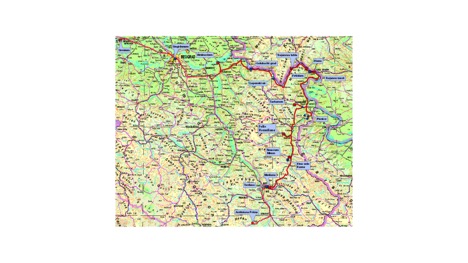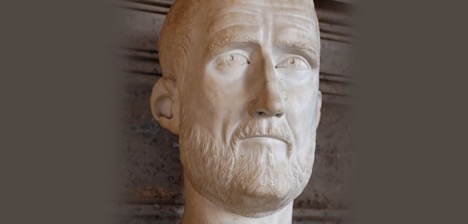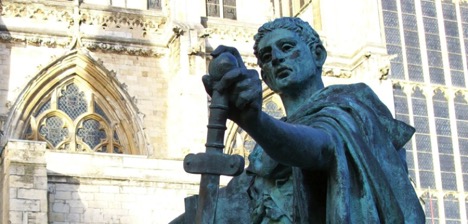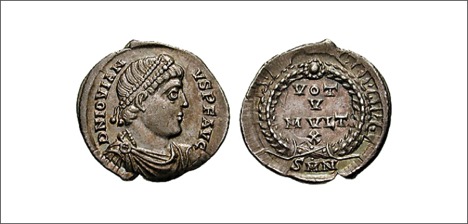
Routes of the Roman Emperors
The Republic of Serbia is one of the states that made up the former Yugoslavia, which broke up in the bloody wars that occurred during the 1990s. Since history immemorial, this region on the Balkan Peninsula has been the scene of various political and cultural influences… and has resulted in a famous trek: The routes of the Roman Emperors.
The routes of the Roman Emperors are based on the fact that the Romans conquered Croatia, Serbia, Romania, and Bulgaria… and that 19 emperors were born in this territory. The routes lead through ancient Roman cities, palaces, and fortifications in these countries.
As far as Serbia is concerned, this tourist and archaeological project includes a 600 km long route with several ancient Roman sites, including cities and places of birth of 17 out of the 19 Roman emperors.
But let us take a look at a few of the more interesting ‘Serbian’ Roman Emperors.
Roman Emperors

Trajanus Decius (Caesar Gaius Messius Quintus Trajanus Decius)
Trajanus Decius (Caesar Gaius Messius Quintus Trajanus Decius)
Trajan Decius was the first man born in Serbia to rise to the imperial throne. This Roman emperor was born around 201 AD in Budalija, near Sirmium – today’s Martinci near Sremska Mitrovica. The army elected him to the position in 249, and he died in 251 in the area of today’s Dobrudzha in the battle against Goth. He is also known for being the first Roman emperor to die in battle. Shortly thereafter, he was declared or proclaimed a deity.
Claudius Gothic (Marko Aurelius Valerius Claudius Augustus)
Claudius Gothic was born in Sirmium in the year 210. After he defeated Gotha in the battle of Niasuss (Nis) in 268, the army chose him to be emperor. He is known for ordering the execution of a Christian monk on February 14th, 269, who later became known as Saint Valentine. Claudius Gothic died of plague in the beginning of the year 270, and the Roman Senate described him as Divine Claudius Gothic.
Aurelian (Lucius Domitius Aurelianus)
Aurelian was born around Sirmium in 214 on a small farm estate. In 270, the Danube legion chose him as an emperor after the death of Claudius II. He was known as the advocate of the Mithraism and the cult of the Invincible Sun, as well as the fiscal reformer. The most important thing he did was the demolition of the secluded Gaelic Empire and its return under the auspices of Rome. He ruled for five years, up to 275, when he was killed by the Praetorian Guard on his way to Asia Minor when he planned to conquer Mesopotamia.
Probus (Marcus Aurelius Probus)

Probus (Marcus Aurelius Probus)
Probus was born in 232 AD on a farm near Sirmium. He ruled from 276 to 282. Like Aurelian, he was killed by his own army, after forcing them to dig channels on a hot summer day. Later they repented and buried him with all the imperial honors. He remained famous for being the first emperor to allow the cultivation of grapes outside of Italy. The first grape was grown in Glavica on the mountain Fruška Gora. Then, grape growing began in Smederevo, a town near Belgrade (Singidunum). From then on, in Serbia, they cultivate an indigenous grape variety, known as Smederevo’s grapes).
Maximian, (Marcus Aurelius Valerius Maximianus)
Maximian was born near Sirmium around 250 AD. Diocletian pronounced him Caesar in 285, and then Maximian was titled Augustus, along with and equal to Diocletian. He ruled with Diocletian from 286 to 305, when they abdicated together. He returned to the throne in the year 310, however, it was thwarted by the then legitimate ruler Constantine I, after which Maximian committed suicide.
Galerius, (Gaius Galerius Valerius Maximianus)
Galerius was born and buried in Felix Romuliana (Gamzigrad), near Zajecar, where he built most of the structures, the remains of which we can see today. He built his palace in the 3rd and 4th centuries for himself and for his mother Romuli, whom he was named after. Even though he was known as the great persecutor of Christians, he rebelled before death and issued the Edict of Serdica, also called Edict of Toleration by Galerius, officially ending the Diocletianic persecution of Christianity in the East.
Constantine I, also known as Constantine the Great, (Flavius Valerius Constantinus)

Constantine I, also known as Constantine the Great, (Flavius Valerius Constantinus)
Constantine the Great was born in (Naisuss) Nis, February 27, 272, from father Constance Hlor and mother Jelena, who was of modest origin. He is remembered as the greatest emperor of the late Roman Empire, and is considered one of the most important figures in the history of Europe and Christianity. He ruled from 306 to 337. He proposed the Edict of Milan in 313, proclaiming religious equality and the cessation of the persecution of Christians. This period of peace was used to build the New Rome – Constantinople.
Licinius (Gaius Valerius Licinianus)
Licinius I was born around 263 near Felix Romuliana. Together with Constantine the Great, he proposed the Milan edict and became a co-ruler with him, and even married his sister. He led two civil wars against Constantine: the first ended in peace, although Licinius suffered a heavy defeat, and the other, in 324, he lost. He was imprisoned in Byzantium, the future Constantinople, then taken as prison to Thessalonica. There by Constantine’s order, Licinius was executed together with his son and Constantine’s sister.
Jovian (Flavius Jovianus)

Jovian (Flavius Jovianus)
Jovian was born around 331 in Singidunum, today Belgrade, of a peasant family. He ruled from 363 to 364, a total of 236 days. After the death of Julianus, he was chanted by the army to be the emperor, but it is believed that the legionaries confused him with another Jovian, who was the chief notary. He died suddenly in a dream, and the death of this ruler remained under a veil of secrets: some believe that the Senate was trying to get rid of him. The version that is universally accepted and therefore has entered history is that Jovian died of coal poisoning, as there was a furnace in his room.
All together, 17 Roman rulers were born on the territory of today’s Republic of Serbia. This impressive number makes up a fifth of all the rulers of Rome, and no modern state, except Italy, can boast of so many emperors. During the reign of these ‘Serbian’ Roman rulers, trade and metallurgy was developed. Important cities in the center of the Roman Empire were built up in both financial and social terms as well as the construction of magnificent villas, Roman baths (terme), theaters, and lagoons for Roman legions in the cities…the remains of many can still be seen today.









No comments
Trackbacks
Our apologies, you must be logged in to post a comment.